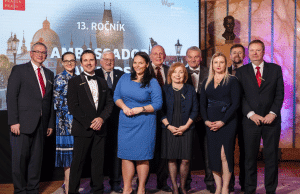According to a recent study published by Visa, the fastest growing segment in the travel market is the people aged over 65, expected to double their international travel to an estimated 180 million trips by 2025.
In other words, one-in-eight international trips globally will be taken by senior travellers.
This trend can be explained by a set of demographic and socio-economic factors such as ageing general population, rise of the middle class in the emerging economies and technological advances that make travelling more comfortable.
Pair it up with the growing demand in health tourism, and there is a clear case for thinking how to seize the opportunities presented by this outlook already today. So, let’s start with a few ideas.
First: Forget the stereotype about an old couple lost in the era of technology. Market segmentation based on behaviour will be more useful than the one based solely on demographics. The people we are talking about are already used to be online and will continue to be so when they retire. Meanwhile, they leave a long trail of information behind, telling us about their behaviour, habits and interests, which we can use to create better travelling experiences.
Second: Extend the season. Senior travellers have more time to spend on travel and leisure and are generally more flexible, but they often prefer to travel off-peak, avoiding crowds and extreme weather. It gives you a reason to shift the focus from generic seasonal marketing practices and create specialised, precisely targeted off-season offers that will drive the demand and funnel purchase.
Third: Raise the bar for quality. Bear in mind that many elderly travellers will seek higher quality service not only because they are less fit, but also because they see them as a fair reward for a life-long hard work. And with less financial obligations and more savings in general, especially in the early years of retirement, they are ready to pay for it.
Fourth: Create meaningful loyalty programs. With regular travel often becoming an important part of the senior people’s lifestyles this should be a very important part of your strategy. There is a lot to be said about customer needs and drivers of loyalty, and it doesn’t matter wether you take 5 or 10, Maslow’s pyramid or somebody else’s list of motivators. What matters is that you understand what the elderly travellers feel and think, what they fear from and hope for, what does and what doesn’t matter to them.
Fifth: Rethink entertainment. Unfortunately, many hotels and operators still tend to recreate grotesque movie scenes of spaced out people playing tombola, while reality shows us the people who are creative, curious and self-aware. Facilitating blogs, art, interest in history and nature, social engagement or shopping can create strong networks between the hosts and their elderly guests that can help tremendously in destination development.
Sixth: See your doctor. While developing medical tourism requires substantial investment in facilities and complex adjustments of policies and regulations, there is no reason not to include health services into your operating model whenever possible, especially because health is a standing concern of many senior travellers. Global platforms connecting people who need treatments with hospitals and doctors showing a growing demand. Get in touch with them and see where does it take you.














